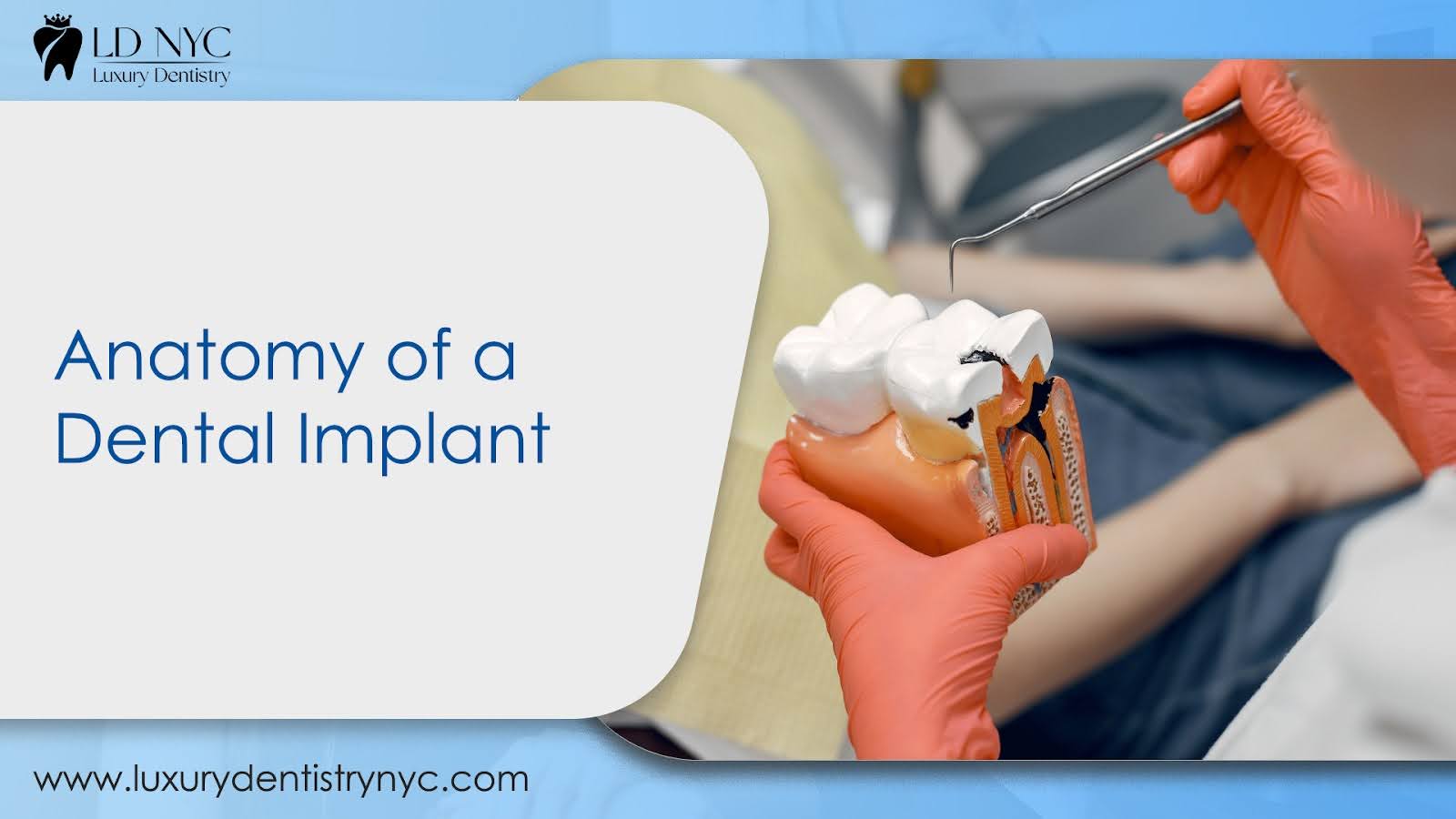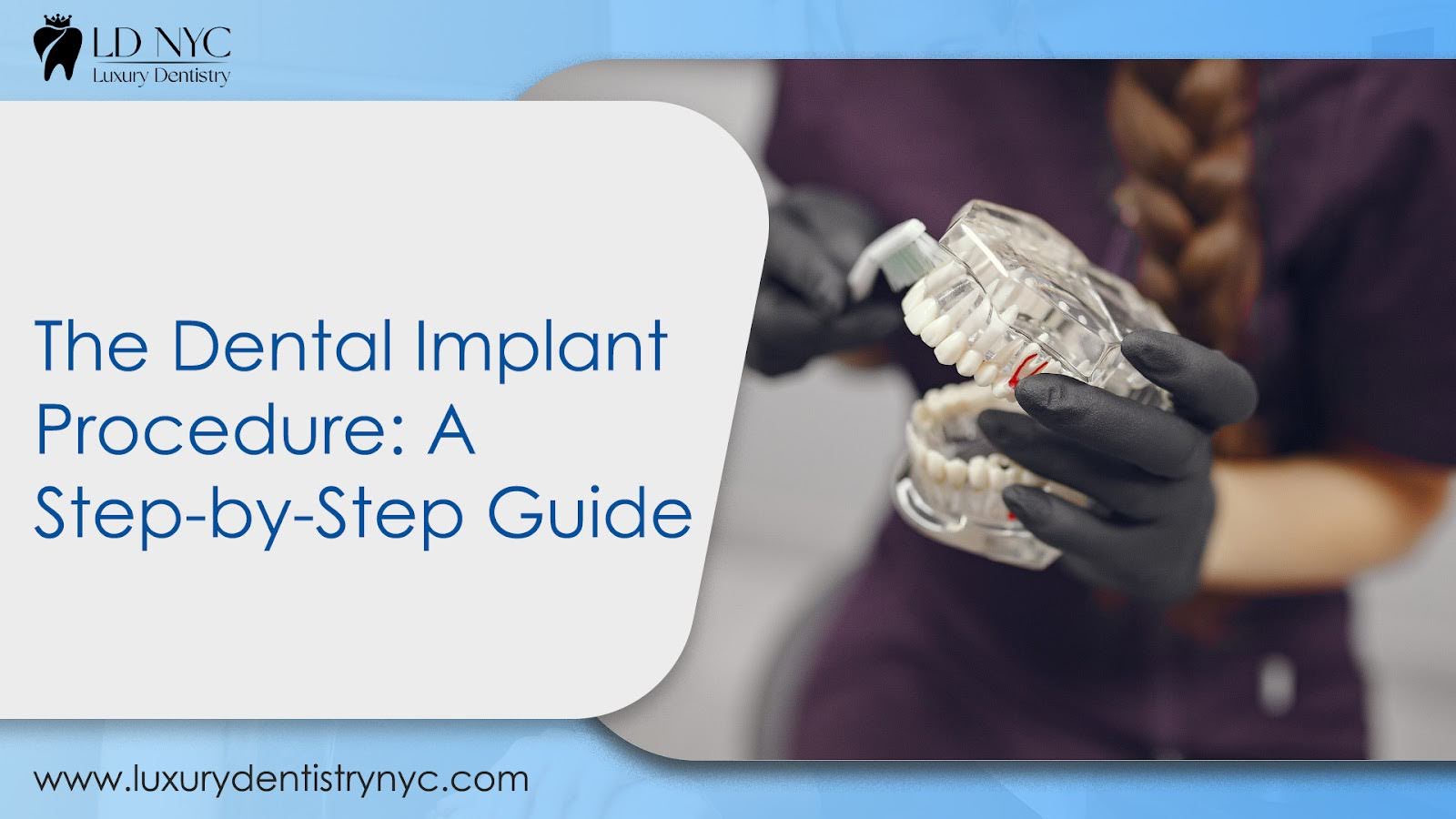Dental implants have revolutionized the field of dentistry, providing a long-lasting solution for individuals with missing teeth. This comprehensive guide explores the intricacies of dental implant procedures, from understanding the anatomy of implants to evaluating candidacy, exploring advanced techniques, and discussing care and maintenance.
Table of Contents
ToggleUnderstanding Dental Implants
Dental implants serve as artificial tooth roots, providing a sturdy foundation for replacement teeth. Composed of biocompatible materials such as titanium, implants fuse with the jawbone, mimicking the natural tooth root and offering stability and durability.
Anatomy of a Dental Implant
– Components of Dental Implants
A typical dental implant comprises several components, including the implant itself, an abutment, and a prosthetic tooth or crown. Each component plays a crucial role in restoring function and aesthetics to the smile.
– Material and Design Considerations
The choice of materials and design features of dental implants impact their longevity and success. Factors such as implant surface texture, shape, and size influence osseointegration—the process by which the implant integrates with the surrounding bone.
Types of Dental Implants
Dental implants come in various types, catering to specific patient needs and anatomical considerations, exploring the different types of dental implants.
– Endosteal Implants
Endosteal implants are the most common type, surgically placed directly into the jawbone. They provide excellent stability and support for single or multiple teeth replacements.
– Subperiosteal Implants
Subperiosteal implants rest on the jawbone rather than being inserted into it, making them suitable for patients with insufficient bone density for traditional implants.
– Zygomatic Implants
Zygomatic implants are longer than standard implants and are anchored in the cheekbone (zygoma), offering a viable option for individuals with significant bone loss in the upper jaw. Mini and Micro Implants
Mini and micro-implants are smaller in diameter than traditional implants and are often used in cases where space or bone density is limited.
The Dental Implant Procedure: A Step-by-Step Guide
The dental implant procedure involves several stages, beginning with an initial consultation and culminating in the placement of the prosthetic tooth.
– Initial Consultation
During the initial consultation, the dentist evaluates the patient’s oral health, discusses treatment goals, and develops a personalized treatment plan.
– Preparation and Planning
Preparation and planning involve taking dental impressions, conducting imaging tests, and coordinating with specialists if additional procedures such as bone grafting are necessary.
Surgical Procedure
The surgical placement of the implant involves making an incision in the gums, drilling a hole into the jawbone, and inserting the implant. The gums are then sutured closed, and the healing process begins.
– Bone Grafting (if needed)
In cases of inadequate bone density, bone grafting may be performed to augment the jawbone and provide adequate support for the implant.
– Post-Operative Care
Post-operative care involves managing pain, swelling, and discomfort, adhering to dietary restrictions, and attending follow-up appointments to monitor healing and progress.
Advanced Procedures and Techniques
Advanced techniques such as guided dental implant placement, sinus augmentation, ridge modification, and full-arch implant restorations expand the scope of implant dentistry, offering solutions for complex cases.
– Guided Dental Implant Placement
Guided implant placement utilizes advanced imaging technology to precisely position implants, ensuring optimal outcomes and minimizing surgical risks.
– Sinus Augmentation
Sinus augmentation involves lifting the sinus membrane and adding bone graft material to the upper jaw, creating a stable foundation for implants in the posterior region.
– Ridge Modification
Ridge modification addresses deficiencies in the jawbone structure, enhancing bone volume and quality to support dental implants.
– Full Arch with Four Implants
The full-arch implant concept utilizes just four strategically placed implants to support a complete set of upper or lower teeth, providing a fixed and stable restoration.
Implant-Supported Dental Solutions
Implant-supported dental solutions offer versatility and functionality, catering to individuals with single or multiple missing teeth.
– Single Tooth Dental Implants
Single-tooth implants replace individual missing teeth, restoring aesthetics and function without compromising adjacent teeth.
– Multiple Tooth Dental Implants
Multiple tooth implants replace several adjacent missing teeth, offering a durable and natural-looking solution.
– Full Mouth Dental Implants
Full mouth implants provide a comprehensive solution for edentulous patients, restoring the entire upper or lower arch with permanent fixed prostheses.
– Implant-Supported Bridges and Dentures
Implant-supported bridges and dentures offer enhanced stability and retention compared to traditional removable prostheses, improving chewing efficiency and patient satisfaction.
Evaluating Your Suitability for Dental Implants
Assessing candidacy for dental implants involves considering various medical and dental factors, ensuring optimal outcomes and long-term success.
– Are You a Candidate for Dental Implants?
Ideal candidates for dental implants are in good overall health, have adequate bone density and healthy gums, and are committed to maintaining oral hygiene.
– Medical and Dental Considerations
Factors such as systemic diseases, smoking habits, and oral health conditions may impact candidacy for dental implants, requiring careful evaluation and personalized treatment planning.
Benefits and Risks of Dental Implants
Dental implants offer numerous advantages, including improved aesthetics, enhanced chewing ability, and preservation of bone structure. However, they also pose risks such as infection, implant failure, and peri-implantitis, necessitating meticulous care and regular monitoring.
Cost and Financing of Dental Implants
The cost of dental implants varies depending on factors such as the number of implants, additional procedures, and geographic location. While implants may require a significant upfront investment, their long-term benefits justify the expense for many patients. Financing options, including dental insurance coverage and payment plans, help make implants more accessible to individuals with budgetary constraints.
Dental Implant Care and Maintenance
Proper care and maintenance are essential for the longevity and success of dental implants. Patients should adhere to oral hygiene practices, attend regular dental check-ups, and avoid habits such as smoking that can compromise implant health.
The Future of Dental Implants
Advancements in implant materials, technology, and surgical techniques continue to drive innovation in implant dentistry, promising even better outcomes and patient experiences in the future.
Conclusion
Dental implants represent a groundbreaking solution for individuals with missing teeth, offering a natural-looking, durable, and functional restoration. By understanding the intricacies of the dental implant procedure, patients can make informed decisions about their oral health and achieve a confident, healthy smile.
About Dr. D’s Dental Clinic
Dr. D’s Dental Clinic is a leading provider of dental implant services, specializing in comprehensive implant dentistry solutions tailored to individual patient needs. With a team of experienced dentists and state-of-the-art facilities, Dr. D’s Dental Clinic is committed to delivering exceptional care and restoring smiles with confidence and precision.
Contact us today to schedule a consultation and learn more about our dental implant services.

Dr. Steven Davidowitz, also known as “Dr. D” by his patients, is one of the Upper East Side of NYC Manhattan’s leading cosmetic dentists that specialize in designing and maintaining beautiful smiles.















